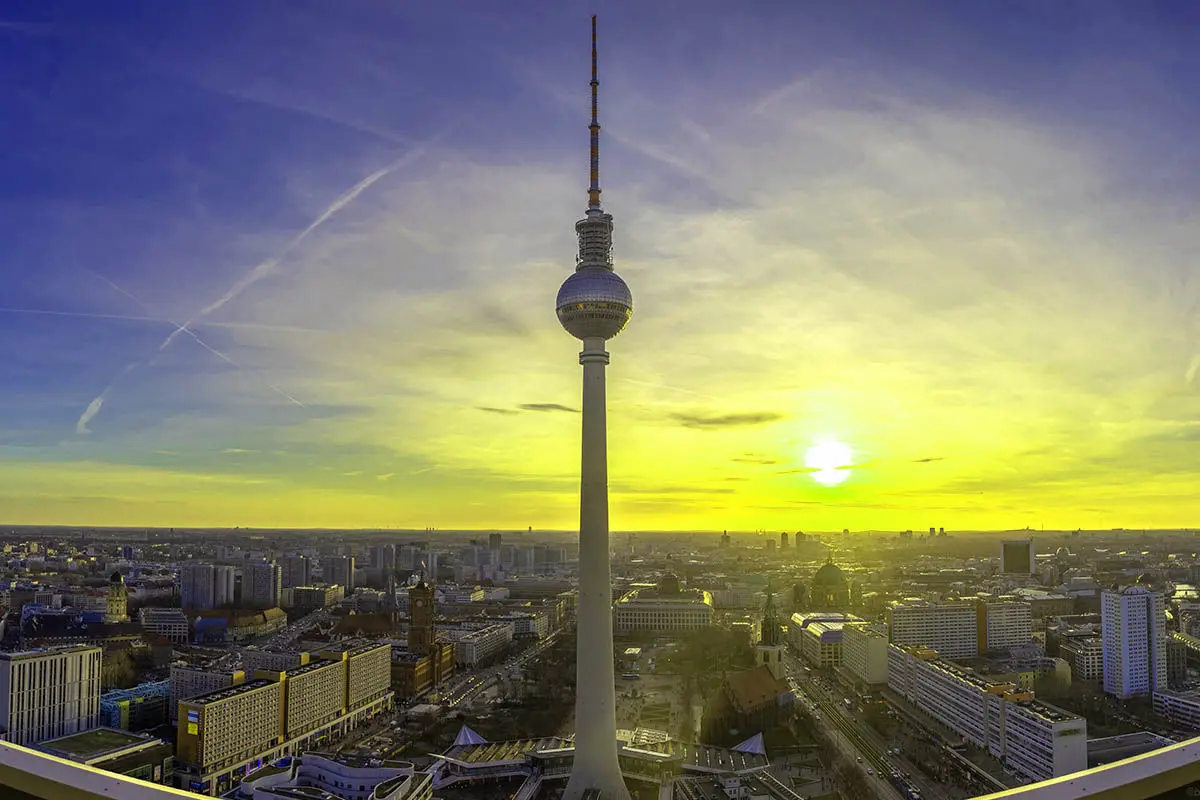
THE BRANDENBURG GATE
We are now listening to the audioguide (audioguides) in the Pariser Platz, or the Paris Plaza, in front of one of the oldest entry gates in Berlin. Since its inauguration in 1791, it has become one of the most important symbols of the city, embodying the triumph of peace over war.
The 26-meter high structure was built in a neoclassical style which is reminiscent of the edifices within the Athens Acropolis. The upper section is presided over by a four-horse copper chariot which represents the Goddess of Victory as she enters the city.
Since its construction, the Brandenburg Gate has been the site of numerous historical events. Members of the royal family, Napoleon’s Army, and Nazi parades have passed under the arch. However, even though damage from World War II has since been repaired, the monument was largely neglected between 1961 and 1989 because it resided in no man's land between East and West Berlin. After reunification, the Brandenburg Gate finally recovered its rightful place as an essential city monument.
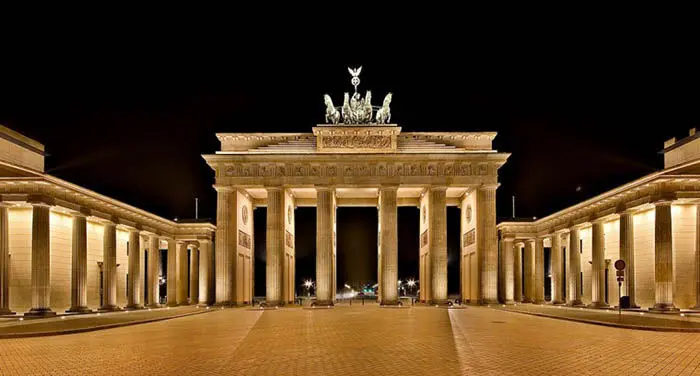
THE BERLIN WALL
At the end of World War II, the allies divided Berlin into four sectors: the French, English, American, and Soviet. Shortly afterward, the western sectors united to become the Federal Republic of Germany (FRG), while Russia constituted the German Democratic Republic (GDR) to the east. Each state followed a distinct socio-economic model.
Emigration from east to west proliferated, with almost 3 million people crossing the border over time. As a result, in the dead of night on August 12, 1961, the Soviets erected a temporary fence that ran 155 km across the city. With it, they could secure 69 of the 81 control points that provided access between the two sections over the city. Over the next few days, the Soviets would replace the clandestine fence with an imposing brick wall, forcibly evicting the residents whose houses stood in the way.
The Berlin Wall eventually became three and a half to four-meter concrete perimeter, topped by a slippery rounded surface to prevent migrants climbing over. The so-called death strip ran parallel to the wall, which consisted of a moat and a barbed wire fence. Furthermore, the Soviets patrolled an adjacent road 24 hours a day with military vehicles, automatic weapons and ferocious guard dogs. Meanwhile, watchtowers fitted with guns and high tech alarm systems were strategically placed throughout.
Between 1961 and 1989, more than 5,000 people managed to cross the wall, although many more died in the attempt. Migration was risky as GDR guards were under strict orders to shoot to kill.
The opening of the borders between Austria and Hungary in May 1989 led to the fall of the wall, as more and more Germans traveled to Hungary to seek asylum in the various Federal Republic of Germany embassies. In response to enormous demonstrations in Alexanderplatz, the GDR affirmed on November 9, 1989, that reunification with the west would be allowed.
That same day, thousands of people gathered together at checkpoints to cross to the other side, resulting in a mass exodus from the east. The next day, Berliners started smashing holes in the wall, effectively ending this chapter of history once and for all.
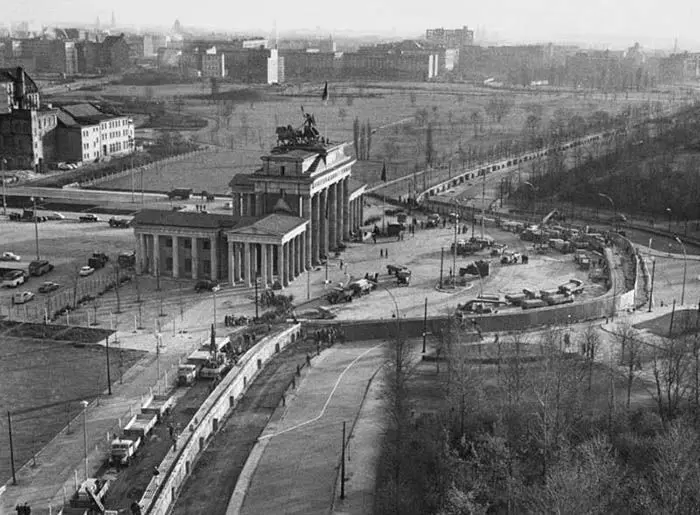
CHECKPOINT CHARLIE
Operating between 1945 and 1990, Checkpoint Charlie was the most famous border crossing of the Berlin Wall. Its location on Friedrichstraße allowed the US and Soviets to control their respective zones, where the Mitte and Kreuzberg districts currently meet.
Checkpoint Charlie was the scene of some spectacular escapes. Others, who weren’t so lucky and were captured in their attempt, were promptly executed.
One of the most well-known cases was that of Peter Fechter. Upon almost reaching the other side, he was shot by Soviet forces and left to bleed to death. West Berlin soldiers desperately wanted to rescue him but were unable to react for fear of provoking further conflict.
The checkpoint was demolished on June 22, 1990, leaving the adjacent Checkpoint Charlie Wall Museum as the only reminder of this historical place. Later, in 2000, the local government rebuilt the checkpoint, which is one of the most visited tourist attractions in Berlin today and can be visited with the audioguide (audioguides).
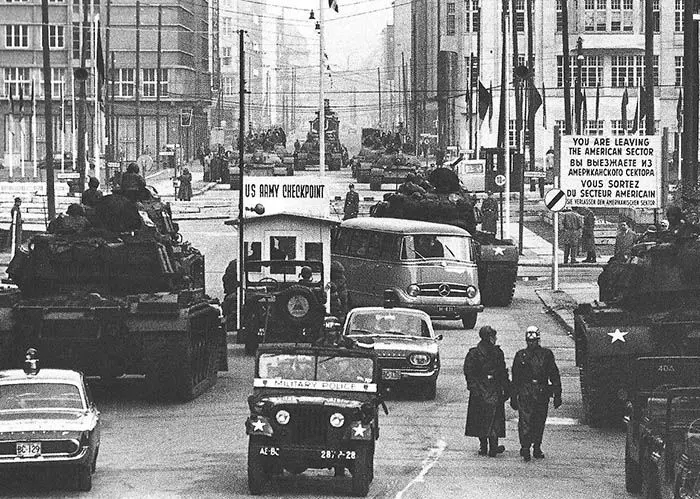
BERLIN CATHEDRAL CHURCH
Known locally as the Berliner Dom, this is the main temple of the Evangelical Church in Germany and the most emblematic religious building in Berlin. It is located opposite Lustgarten, which lies next to the Spree River.
Despite its name, the church has never been a cathedral in the strict sense of the word, given that it has never hosted a Catholic bishop. Rather, St. Hedwig's Cathedral serves as the official residence of the Metropolitan Bishop of Berlin.
Commissioned by Emperor Wilhelm II and designed by Julius Raschdorff, the cathedral was built between 1894 and 1905 over a small baroque temple which was demolished to make room.
The temple was severely damaged by allied bombings during the Second World War. Consequently, a temporary roof was installed to protect the interior until reconstruction could begin in 1975. Finally, work finished in 1993, with a lower height than the original design but surmounted by a beautiful greenish copper dome. From the top, you can enjoy sweeping views of central Berlin.
Getting inside the Berlin Cathedral with the audioguide (audioguides) is the Hohenzollerngruft crypt, which is home to the sarcophagi of various members of the Hohenzollern, a powerful German family who ruled in the 11th and 12th century.
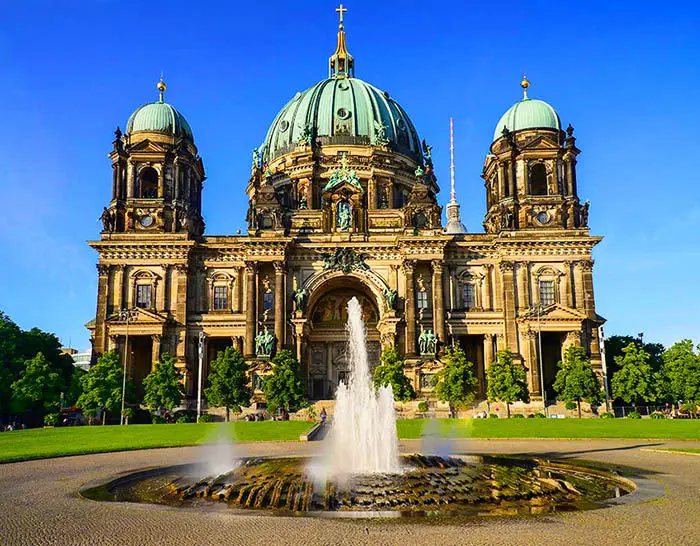
THE REICHSTAG BUILDING
The Reichstag is a famous Berlin landmark and symbolic to its status as the capital of Germany. It was the seat of Parliament during the Second German Empire and later became the Parliament of the Weimar Republic. Since 1994, the Federal Assembly has met there every five years to elect the president of Germany. It has also been the meeting place of the German Parliament since 1999.
On November 9, 1918, the social democrat leader Philipp Scheidemann proclaimed the country to be a republic on the balcony of the main façade. A plaque commemorating this event can be seen today.
The building, designed by Paul Wallot, was completed in 1894 in a neo-Renaissance style. A 75-meter dome sits on top, whose construction caused a considerable amount of controversy. It was initially meant to be located in the center of the building, above the plenary hall, although Wallot was pressured to move it to the front, above the main entrance. In 1889, after construction was well under way, the architect managed to return it to its original position.
However, he had to change the materials to steel and glass as the initial design would not have been supported by the structure which had already been built underneath.
In 1933, four weeks after Adolf Hitler came to power, the Parliament was the victim of a mysterious arson attack of which the culprit remains unknown. Hitler successfully took advantage of the situation by abolishing most of the fundamental rights of the 1919 Weimar Republic Constitution. For example, he was able to repeal fundamental civil rights through paragraph 1 and established the death penalty for "high treason" through paragraph 5.
During the Battle of Berlin at the end of the Second World War, the Reichstag was the scene of a bloody battle, and the building was badly damaged. The most urgent restorations were carried out in the 1960s. However, its current form can be attributed to British architect Norman Foster who renovated the structure during the 90s. The most outstanding feature is its transparent and publically accessible glass dome, which has become a major tourist attraction today with the audioguide (audioguides).
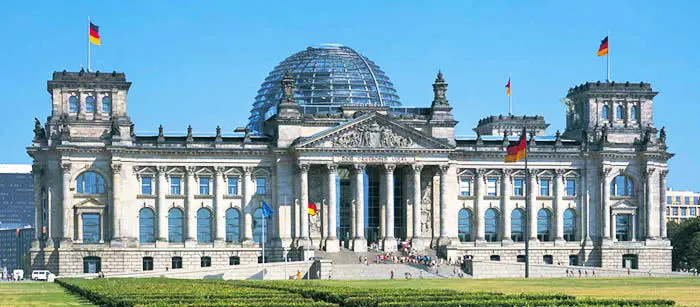
MEMORIAL TO THE MURDERED JEWS OF EUROPE
Opened in 2005, this sizeable memorial is dedicated to the Jewish victims of the Holocaust. It is also known as the Holocaust Memorial.
Located on a large inclined field, the monument is covered by a rigid grid of 2,711 irregular sized stelae or concrete slabs, which provokes a sense of disorder and chaos.
Underground is a visitor center with various thematic rooms such as the Room of Dimensions, the Room of Families, the Room of Names, and the Hall of Sites. Throughout the exhibition you will find with the audioguide (audioguides) photographs, diaries, and farewell letters which revoke haunting images of this terrible time.
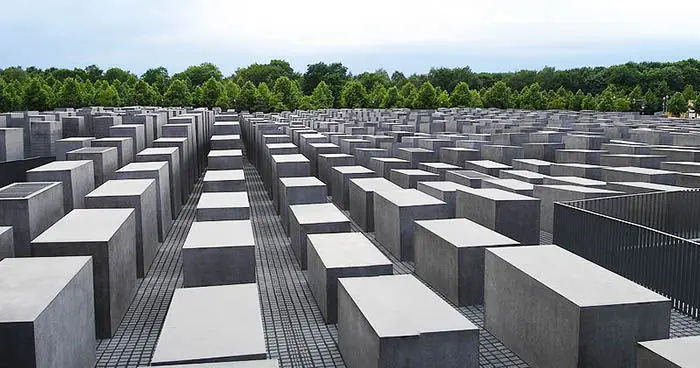
THE VICTORY COLUMN
The Victory Column is one of the most famous symbols of Berlin. “Goldelse” or “Golden Lizzy,” as it is locally known, was built between 1864 and 1873 in Königsplatz (currently Siegessäule or Republic Square) but was later moved by the Nazis. Heinrich Strack ordered its construction to commemorate the victory over Prussia in the German-Danish War. In just a few short years, the Germans won two other wars: the Austro-Prussian War of 1866 and the Franco-Prussian War of 1870. To commemorate all three victories, the three lavish segments were created, and the column was crowned with a bronze sculpture. During the period of the Third Reich, the Nazis added a fourth cylinder to the column, extending its height to 67 meters.
Friedrich Drake designed the crowning sculpture from bronze, which portrays Victoria, the Roman Goddess of Victory. She wears a laurel wreath decorated with an eagle holding a battle standard with a symbol of the Iron Cross. Her wreath could also represent Borussia, who is the embodiment of Prussia. You can admire with the audioguide (audioguides) spectacular views of the city from the panoramic platform at the top of the column.
The French wanted to blow up the monument at the end of World War II but were unable to do so because of the Anglo-American veto. Even so, they removed all the reliefs that alluded to their previous defeats.
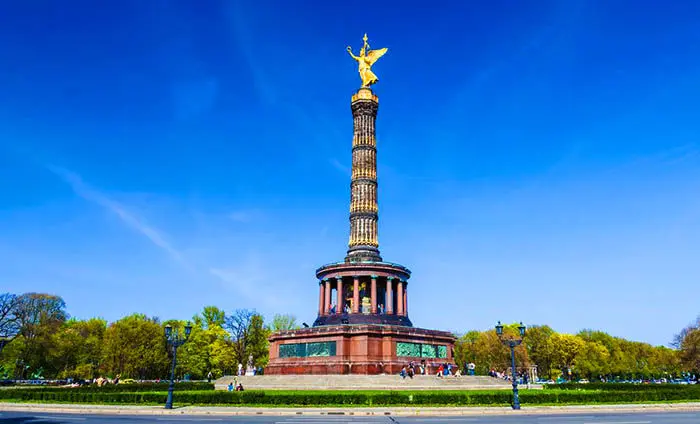
KAISER WILHELM MEMORIAL CHURCH
Kaiser Wilhelm II ordered the construction of this neo-Romanesque style church in honor of his grandfather, Kaiser Wilhelm I. The building was of no particular importance until it was destroyed by allied bombs during World War II.
Plans were made in 1950 to demolish it. However, local residents objected and decided instead to create a memorial with the remains of the church.
Its ruined and blackened exterior reminds us of the futility of war. Inside, you can find with the audioguide (audioguides) a small exhibition displays photos of the era of its destruction.
Opposite the entrance to the church was a modern chapel, known as the New Church, which was characterized by blue glass windows that reflect the beautiful interior light.
At the back of the church is an octagonal building full of more giant blue windows that were built in 1960 as a bell tower.
The shape of the three buildings led to the nickname: "the lipstick and the powder box."
The Kaiser Wilhelm Memorial Church is one of the most fascinating monuments in Berlin. Its unique semi-demolished appearance provokes an eerie sensation that aligns with its overall objective: to remind those who visit that war destroys both lives and architectural treasures.
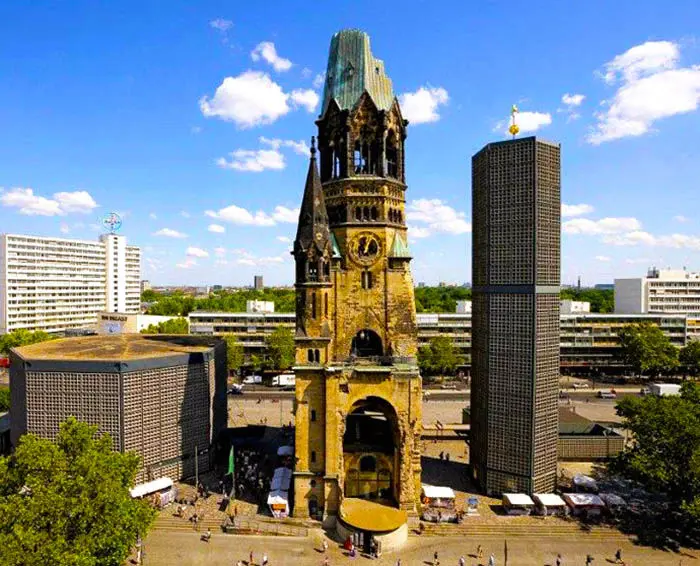
BELLEVUE PALACE
Next stop of the audioguide (audioguides), the Bellevue Palace is located on the banks of the River Spree, near the Victory Column and to the north of the Tiergarten.
Frederick the Great ordered the construction of the palace in 1786 to be used as a summer residence.
This was the first neoclassical building to be constructed in Germany. The complex is made up of three distinct sectors: a central structure with 19 bays and a ball court supported by four Corinthian pilasters. On the sides are two lateral buildings, one on the riverbank called the Spree wing, and another opposite called the Ladies Wing. In addition, a 20-hectare park can be found outside.
The peace treaty of the Franco-Prussian war was signed here in 1870. In 1928, during the era of the Weimar Republic, the palace fell under the ownership of the State who converted it into an ethnographic museum. In 1938, the Third Reich used it as the official residence of their guests.
The building suffered serious damage from allied bombs in May 1945, after which only the exterior facade of the main wing remained standing. After going through several restoration works, it now serves as the official residence of the President of the Republic.
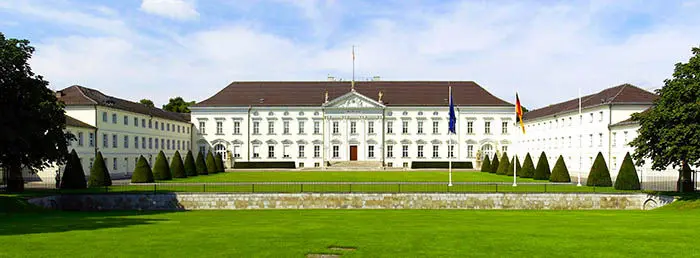
SAINT HEDWIG'S CATHEDRAL
The St. Hedwig's Cathedral is the most important and sacred Catholic church in Berlin, mostly because it possesses the honorary title of a minor papal basilica. It was built between 1747 and 1773 under the reign of Frederick II and commemorates the arrival of the Catholic Silesian immigrants in Berlin.
The building’s structure was destroyed during the WW2 and later rebuilt.
The church comprises of two levels with eight chapels and a simple yet uniquely centric conception of space. In the treasure chamber, you can visit with the audioguide (audioguides) a small exhibition of instruments and liturgical ornaments.
This is where the canon of the town council, Bernhard Lichtenberg, was arrested for publicly praying for the Jews. He was sentenced to two years in prison for misusing the pulpit and would eventually pass away in the Dachau concentration camp. His remains rest in the cathedral.
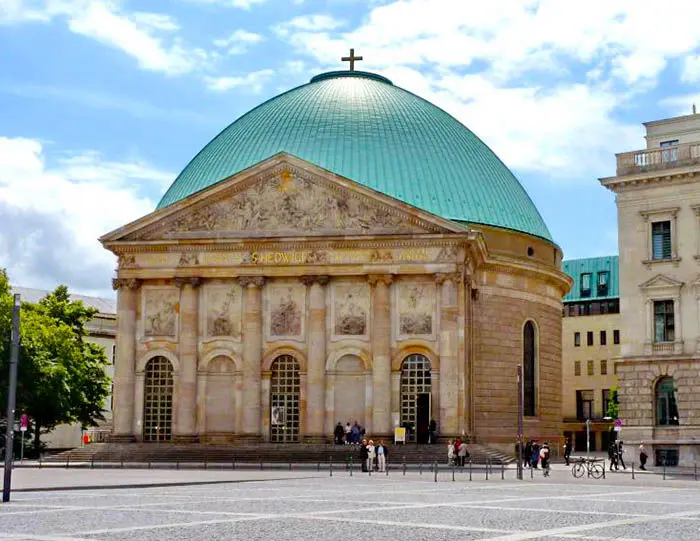
THE CITY HILL (ROTES RATHAUS)
Located in the Mitte district, the Rotes Rathaus acts as Berlin’s City Hall, functioning as the seat of the mayor’s office and the government of the federal state of Berlin. The name of this historic building comes from its facade, which is made of red bricks.
The town hall was built between 1861 and 1869 in the Renaissance style of northern Italy and copies the design of the towers of the Cathedral of Laon in France.
Like many buildings in Berlin, it was damaged during World War II. After its reconstruction, it functioned as the East Berlin City Hall. Once reunification had been achieved, Berlin’s municipal administration moved its headquarters to this building.
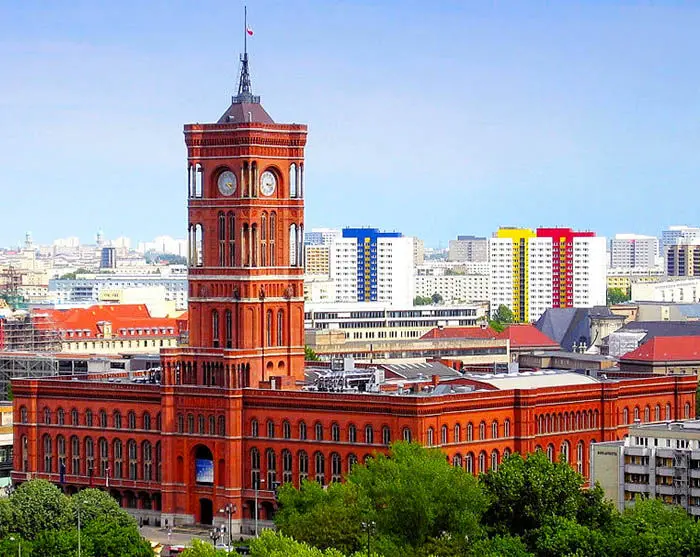
THE TV TOWER (BERLINER FERNSEHTRUM)
Known as the Fernsehturm in German, Berlin’s TV Tower was for years the pride and joy of the GDR. The Soviet’s built the tower in 1969 to demonstrate communism’s superiority over capitalism, attempting to prove to the world that the East was making progress towards a brighter future.
At 368 meters high, the tower is visible from practically anywhere in the city and is the tallest structure in Germany and the highest public access building in Europe. Just above the 204-meter lookout is a rotating restaurant, which spins a full 360 degrees every half hour. Here, diners can admire with the audioguide (audioguides) panoramic views of the various districts of the city. Architectural styles range from late 19th-century residential buildings to the modern skyscrapers of Potsdamer Platz and the emblematic Plattenbau. The latter is famous for its socialist era housing, much of which has become much more cheerful since their once dreary facades were painted in bright colors and murals a few years ago.
An odd daily occurrence is that the reflection of the morning sun forms the shape of a giant cross in the center of the glass sphere. This phenomenon prompted West Berliners to nickname this symbol of Soviet power as "The Revenge of the Pope," in an attempt to shatter widespread communist propaganda from the east.
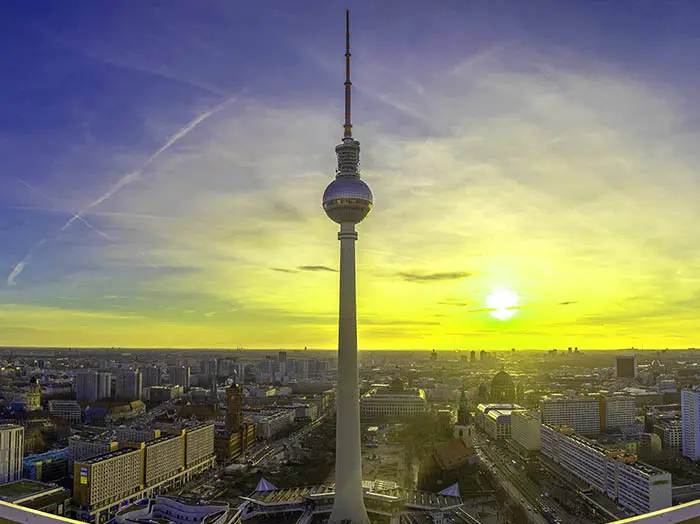
THE NEW GUARD (Neue Wache)
Known as the Neue Wache in German, the memorial is located on the old city wall. Through its design, architect Friedrich Schinkel intended to evoke the defeat of Napoleon and the attainment of freedom in Berlin. The structure was completed in 1818.
The building has been used for various commemorative functions over the years. In 1931, it was declared a monument to honor the victims of the First World War. In 1960, it was used as a remembrance monument for victims of German fascism. Currently, it pays homage to all those who have suffered from conflict throughout the world, be it from war, fascism, or any other form of violent injustice.
Inside is a poignant sculpture of the famous female artist Käthe Kollwitz holding the lifeless body of her son in her arms.
Let's discover Berlin's Palace in the next point of this audioguide (audioguides).
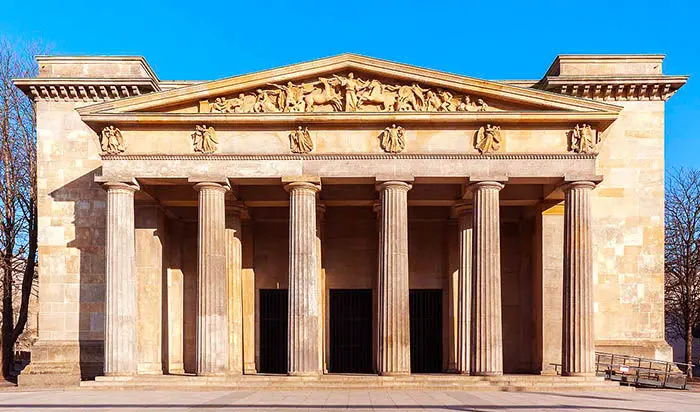
BERLIN PALACE
The Berlin Palace, as explained in the audioguide (audioguides), was the most important building of the Prussian administration. The first stone was placed in 1443, and it later became the primary residence of the Hohenzollern from the 18th century until the fall of the German Empire at the end of the First World War.
In 1307, Berlin and the neighboring town of Cölln were united to form a single city. The monarchy manifested this union through the construction of the palace, converting it into the official center of the newly created city. In 1538, the building began to be demolished so that it could be replaced by a new palace. It became a royal residence with the coronation of Frederick I of Prussia in 1701. In 1845, the palace acquired its final form, including the dome above the entrance hall.
The palace was damaged during the Battle of Berlin in 1945 and was entirely demolished during the communist era. Much later, in 1976, the more modern Palace of the Republic was inaugurated in its place. However, this was demolished in 2006 with the objective of rebuilding the original palace.
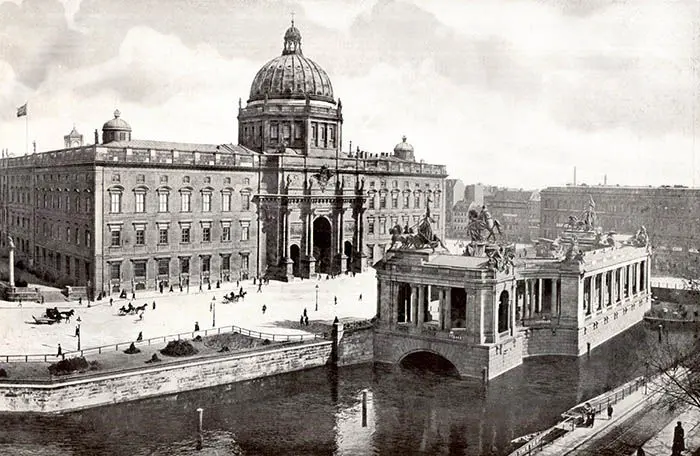
BEBELPLATZ
Bebelplatz, formerly known as Opernplatz, is located on the south side of Unter den Linden Avenue, which is the main artery of Berlin.
This is the plaza where thousands of books were burned in a massive bonfire in 1933. Some of the authors censured by the Nazis include Karl Marx, Heinrich Heine, and Sigmund Freud. With the audioguide (audioguides) you can see an installation comprised of a large glass slab covering an empty bookshelf that commemorates the site.
Surrounding the square are a number of magnificent buildings, such as the Berlin State Opera, the Humboldt University, and St. Hedwig's Cathedral.
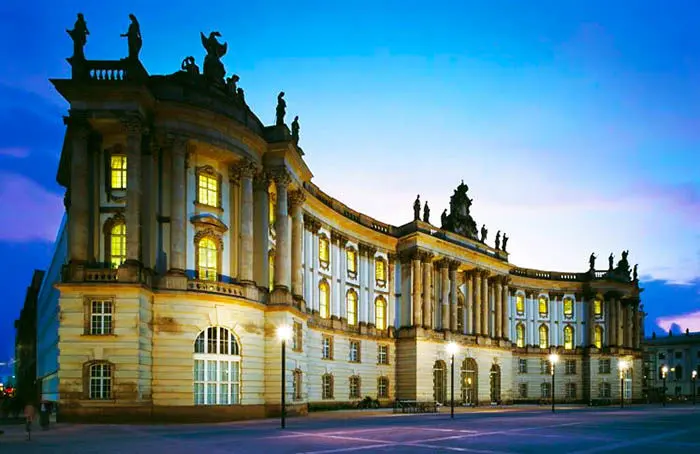
GENDARMENMARKT
We are now in the Gendarmenmarkt, a central Berlin square which is widely considered to be the most beautiful in the city.
In the center of the plaza is the Konzerthaus, an auditorium built in 1802 which had to be restored in 1979 after suffering significant damage from a fire.
And on each side of the square, we can find with the audioguide (audioguides) two identical churches. On the north side is an 18th-century French church of the Protestant Huguenots who had fled from France to Berlin. And on the opposite side is a German church, which was built in roughly the same period.

MUSEUM ISLAND
Museum Island occupies the northern half of an island on the Spree River and is composed of five prominent museums, making it one of the most important museum complexes in the world. The following audioguides will describe each of them.
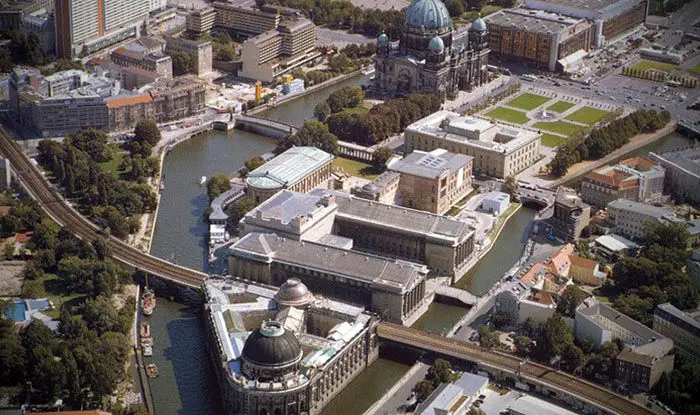
THE ALTES MUSEUM
Also known as the Old Museum, this awe-inspiring collection is the most ancient on the island and houses the most important works of classical architecture in Berlin.
Its collection focuses on ancient Greek culture, although Roman art also has its place.
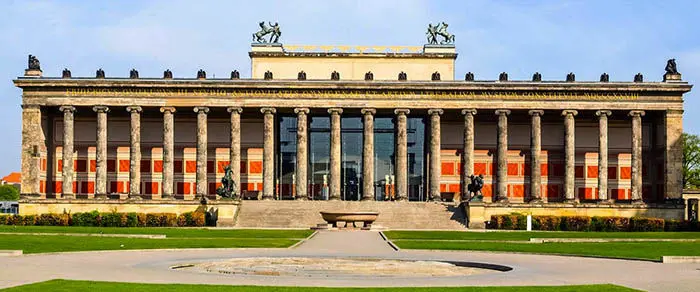
THE NEUES MUSEUM
The Neues Museum is the most important museum on the island, despite the fact it was almost completely destroyed in World War II. Rebuilding was only complete in 2009, a massive project which conserved the old building including its original structure.
The Egyptian section is the highlight of the collection. Here, you can see with the audioguide (audioguides) mummies and funerary figures used for burial rituals. However, the masterpiece is the bust of Queen Nefertiti which has been preserved in perfect condition since its creation in 1351 BC. Artifacts from the Stone Age and others from the Golden Age and the Bronze Age are on display, as well as various statues and items from the Roman era.
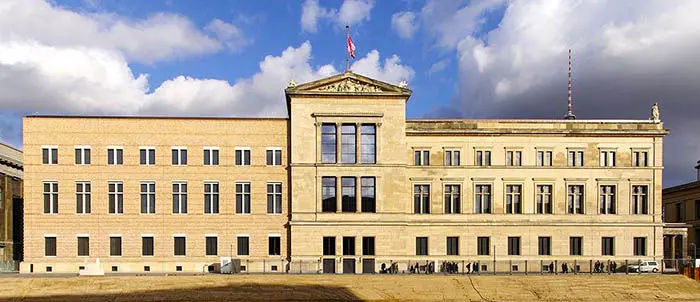
THE PERGAMON MUSEUM
This is the most imposing museum on the island and the most visited in Berlin.
Within lies a splendid collection of classic Middle Eastern antiques relating to Islamic art. Be sure to visit with the audioguide (audioguides) the most impressive monument of the museum, the Altar of Pergamon, which was built more than 2,000 years ago to praise the gods for the blessings they granted. It also houses a 17-meter-high reconstruction of the door of the Roman market of Miletus, a reconstruction of the 6th century BC Astarte Gate, and various masterpieces of Islamic art from the 7th to the 19th century. Even for those without a special interest in Islamic art, the Pergamon is a must in Berlin.
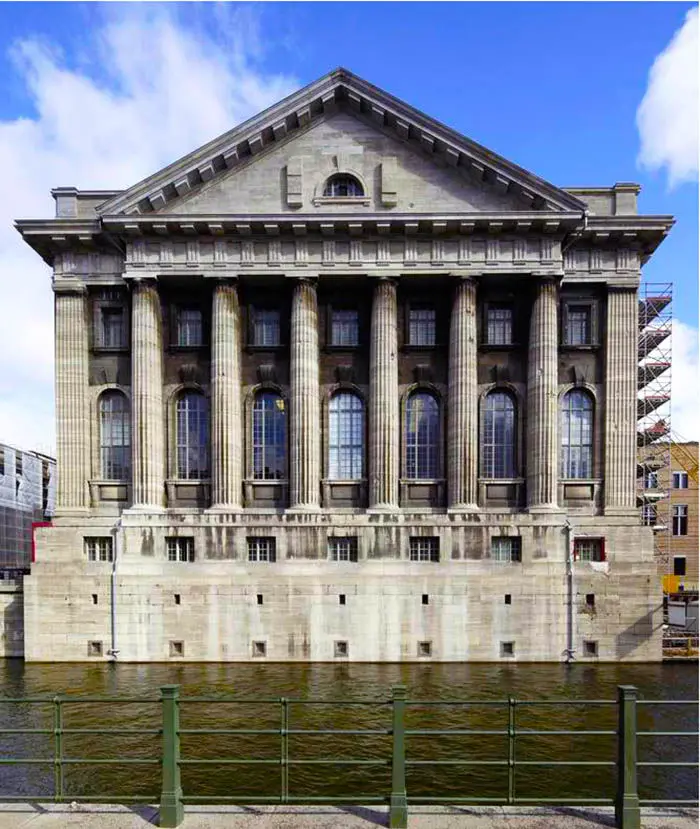
THE BODE MUSEUM
This museum owes its name to its founder, Wilhelm von Bode. Initially, however, it was known as the Kaiser-Friedrich-Museum in honor of the German Emperor Frederick III.
The Neo-Baroque building, which reopened in 2006 after being closed for restoration, houses a collection of Byzantine pieces, sculptures, coins, and medallions.
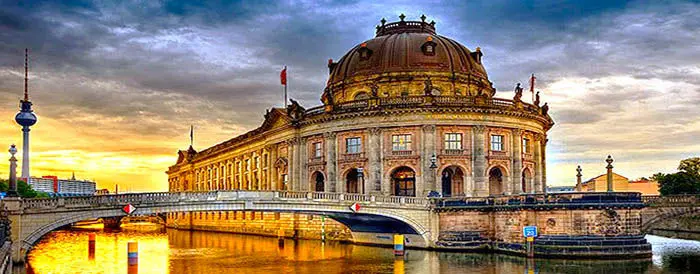
THE OLD NATIONAL GALLERY
The old National Gallery was created to house a 19th-century art collection donated by banker Joachim H. W. Wagener. Over time, it expanded significantly to become one of the largest collections of 19th-century sculptures and paintings in Germany.
The building we can see with the audioguide (audioguides) was badly damaged during the Second World War. In 2001, it was finally completely restored and reopened to the public.
At the moment, it only houses the paintings of the collections. The sculptures reside outside of the island, near the neo-Gothic church known as Friedrichswerdersche Kirche.
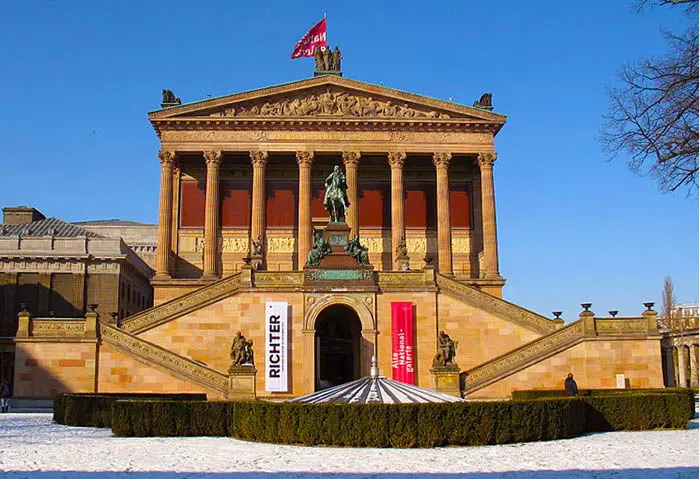
THE BERLIN JEWISH MUSEUM
This is one of the largest Jewish museums in Europe, and next stop of the audioguide (audioguides) of Berlin. Through artistic works and everyday objects, it portrays the harrowing history of the Jews who have lived in Germany for the past two thousand years.
Polish architect Daniel Libeskind designed the building, which was inaugurated in 1999. Upon opening, the building was completely empty, which led it to become the first museum in history to be inaugurated purely for its architecture. The metal facade, whimsical windows, and the lightning-shaped floor are its main features. Together, they convey the idea that the building was left empty by Berlin Jews who disappeared during the Holocaust. The Holocaust Tower and the Garden of Exile also belong to the museum.
The floor of the Holocaust Tower has a pointed quadrilateral shape, while its facades are made of exposed concrete. The only lighting in the room comes from a hole in the wall located at the top of the tower.
The "Garden of Exile," whose official name is Josef Hoffmann, is a large raised garden featuring a series of 49 pillars arranged in a grid, a number which symbolizes the year of Israel's foundation. Each pillar is made of hollowed concrete and has been filled with earth from Berlin, except the central pillar which contains earth from Jerusalem. Vegetation has been planted above each. The grounds of the garden are on an incline, while the pillars are set perpendicular to the ground. The architect has used this unusual effect to make guests feel uneasy as they walk through the garden.
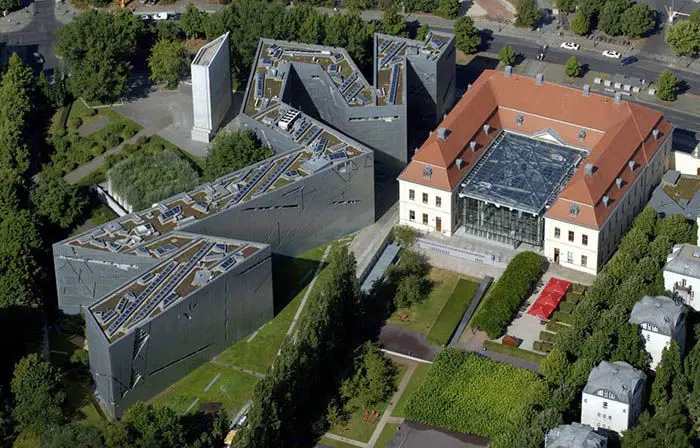
TOPOGRAPHY OF TERROR
Here you can see with the audioguide (audioguides) a neo-baroque building, which in 1933 became the headquarters of the Gestapo and the main security office of the SS.
In the little that remains of the structure, there is currently an open-air museum which exposes the history of Nazi repression.
It also features a Documentation Center, which was completed in 2010 and tells the history of the place, the terror institutions of the National Socialist government, and the crimes perpetrated throughout Europe.
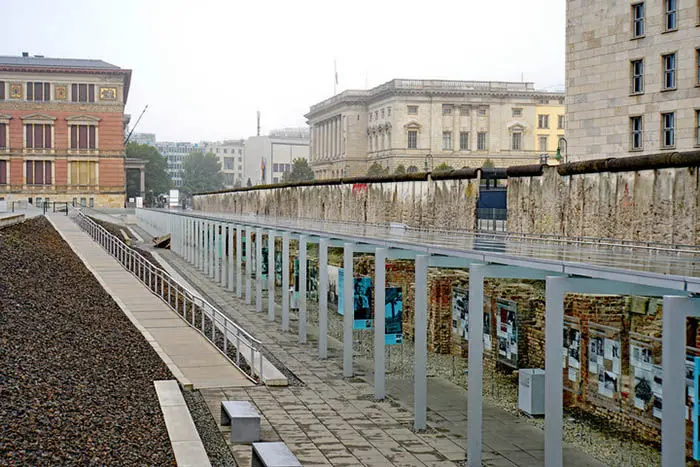
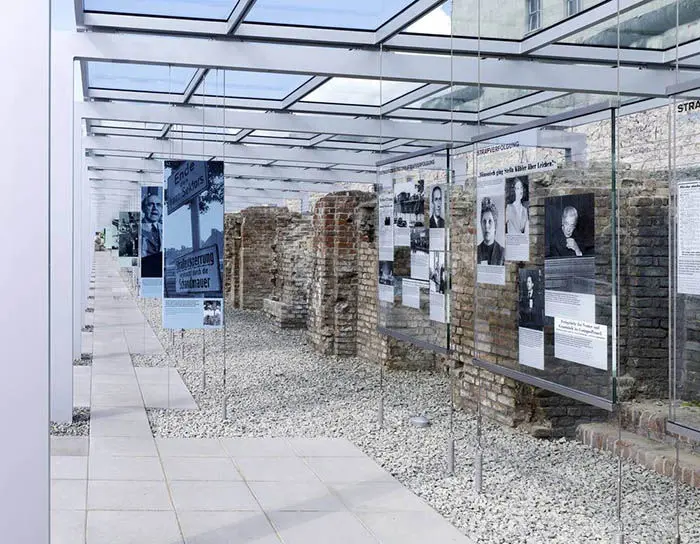
EAST SIDE GALLERY
The East Side Gallery is the most extensive remaining section of the Berlin Wall. At 1,316 meters, this is the longest outdoor art gallery in the world and has been explicitly conserved for this purpose. You will find it with the audioguide (audioguides) in the center of Berlin along the banks of the River Spree.
Consisting of 103 murals from artists from around the world, the collection pays homage to freedom and documents the sense of euphoria and hope at the end of the cold war.
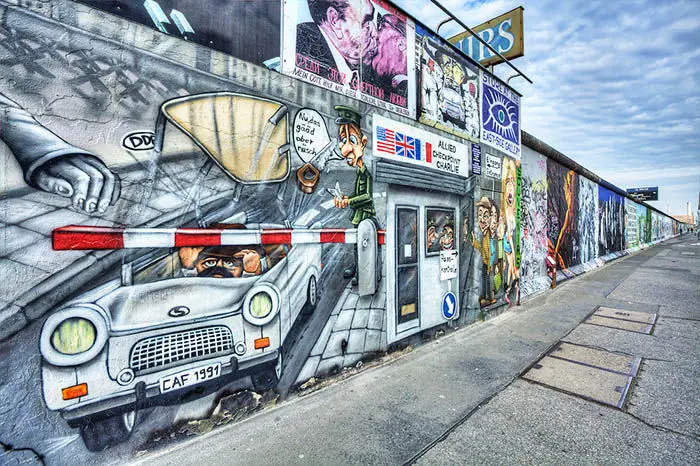
CHARLOTTENBURG PALACE
This Baroque-style palace was built in 1699 by the architect Johann Arnold Nering. After the coronation of Frederick I as the King of Prussia, the palace was remodeled for expansion in 1702. However, Queen Sophia Charlotte, who had commissioned the original design, did not live to see the finished work. After her death, the palace, which was formerly called Lietzenburg, as well as the district in which it is located, were both renamed Charlottenburg in her honor. Between 1707 and 1712, another extension was carried out to build the beautiful dome which you can see today.
Of the entire history of the palace, the long-lost amber room is of the most interest. Designed by the architect and sculptor Andreas Schlüter, its precious amber cladded interior was once declared the eighth wonder of the world.
In 1943, British bombings of Berlin partially destroyed the palace and a significant portion of its decoration, much of which could never be recovered.
The palace is currently used as a museum which exhibits the bedroom of Frederick the Great, emblems of Frederick I and his wife, priceless chinaware, and a large number of paintings which constitute the most important collection of 18th-century French artwork outside of France. The palace’s old theater houses another museum, this time dedicated to Prehistory.
The palace also features a huge garden, initially planted in the baroque French style and later reformed to adhere to the English landscape style. Within it, we can find with the audioguide (audioguides) various buildings such as the Belvedere Teahouse, the Neapolitan Villa, and the Tomb of Queen Luisa of Prussia.

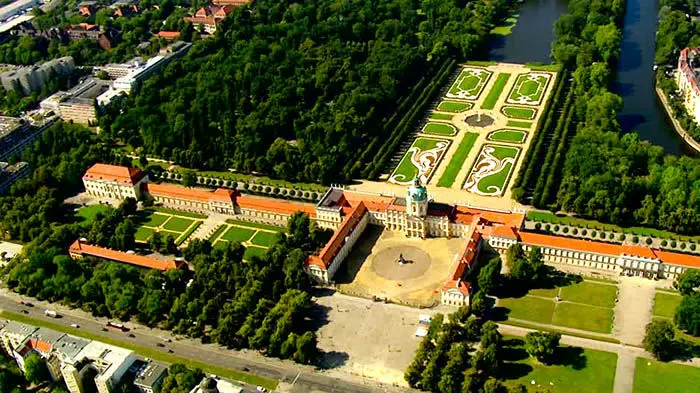
Audio guide devices, Multimedia audio guides,
Audio guide GPS tourist bus-train, charging bases and accessories.
Group guidance systems, headsets, charging cases, tour guide systems accessories.
Audioguides available from mobile devices, web App, downloadable App from Google Store.
Audioguides in several languages, translations, voiceovers. Audio descriptions, signoguides, visual contents for audioguides. 3D Reality.